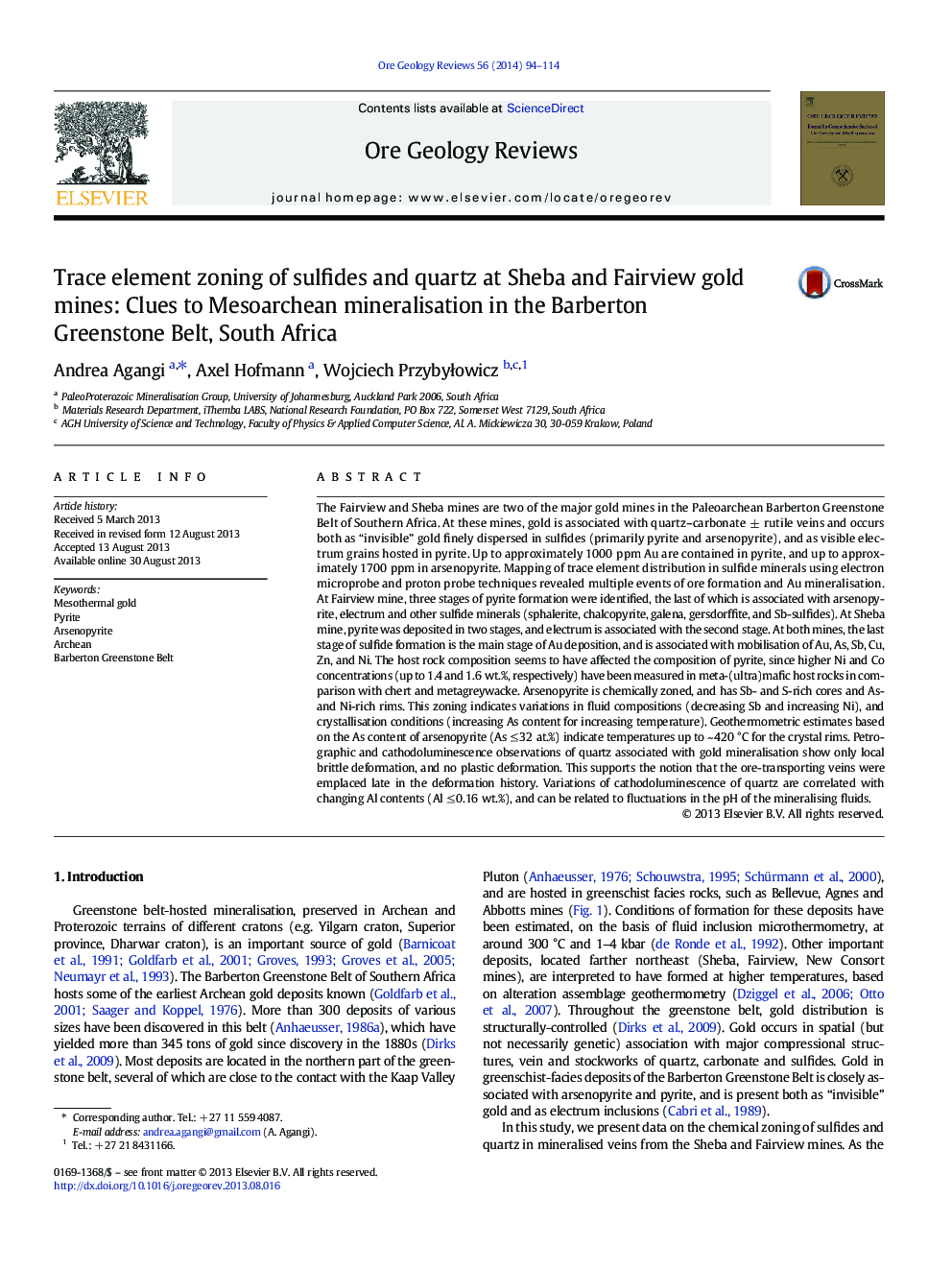| کد مقاله | کد نشریه | سال انتشار | مقاله انگلیسی | نسخه تمام متن |
|---|---|---|---|---|
| 4697424 | 1637247 | 2014 | 21 صفحه PDF | دانلود رایگان |

The Fairview and Sheba mines are two of the major gold mines in the Paleoarchean Barberton Greenstone Belt of Southern Africa. At these mines, gold is associated with quartz–carbonate ± rutile veins and occurs both as “invisible” gold finely dispersed in sulfides (primarily pyrite and arsenopyrite), and as visible electrum grains hosted in pyrite. Up to approximately 1000 ppm Au are contained in pyrite, and up to approximately 1700 ppm in arsenopyrite. Mapping of trace element distribution in sulfide minerals using electron microprobe and proton probe techniques revealed multiple events of ore formation and Au mineralisation. At Fairview mine, three stages of pyrite formation were identified, the last of which is associated with arsenopyrite, electrum and other sulfide minerals (sphalerite, chalcopyrite, galena, gersdorffite, and Sb-sulfides). At Sheba mine, pyrite was deposited in two stages, and electrum is associated with the second stage. At both mines, the last stage of sulfide formation is the main stage of Au deposition, and is associated with mobilisation of Au, As, Sb, Cu, Zn, and Ni. The host rock composition seems to have affected the composition of pyrite, since higher Ni and Co concentrations (up to 1.4 and 1.6 wt.%, respectively) have been measured in meta-(ultra)mafic host rocks in comparison with chert and metagreywacke. Arsenopyrite is chemically zoned, and has Sb- and S-rich cores and As- and Ni-rich rims. This zoning indicates variations in fluid compositions (decreasing Sb and increasing Ni), and crystallisation conditions (increasing As content for increasing temperature). Geothermometric estimates based on the As content of arsenopyrite (As ≤ 32 at.%) indicate temperatures up to ~ 420 °C for the crystal rims. Petrographic and cathodoluminescence observations of quartz associated with gold mineralisation show only local brittle deformation, and no plastic deformation. This supports the notion that the ore-transporting veins were emplaced late in the deformation history. Variations of cathodoluminescence of quartz are correlated with changing Al contents (Al ≤ 0.16 wt.%), and can be related to fluctuations in the pH of the mineralising fluids.
Journal: Ore Geology Reviews - Volume 56, January 2014, Pages 94–114